Information injection-pump assembly
BOSCH
9 400 614 044
9400614044
ZEXEL
101405-3001
1014053001
KOMATSU
3863756
3863756
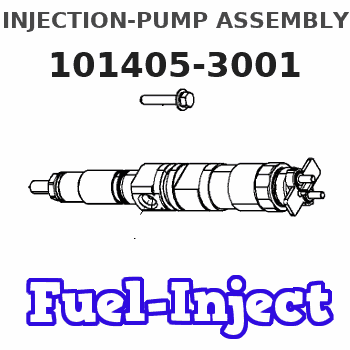
Rating:
Service parts 101405-3001 INJECTION-PUMP ASSEMBLY:
1.
_
5.
AUTOM. ADVANCE MECHANIS
6.
COUPLING PLATE
7.
COUPLING PLATE
8.
_
9.
_
10.
NOZZLE AND HOLDER ASSY
11.
Nozzle and Holder
12.
Open Pre:MPa(Kqf/cm2)
13.
NOZZLE-HOLDER
14.
NOZZLE
15.
NOZZLE SET
Cross reference number
BOSCH
9 400 614 044
9400614044
ZEXEL
101405-3001
1014053001
KOMATSU
3863756
3863756
Zexel num
Bosch num
Firm num
Name
9 400 614 044
3863756 KOMATSU
INJECTION-PUMP ASSEMBLY
S4D102E K 14BC INJECTION PUMP ASSY PE4A,5A, PE
S4D102E K 14BC INJECTION PUMP ASSY PE4A,5A, PE
9 400 614 044
6732711181 KOMATSU
INJECTION-PUMP ASSEMBLY
S4D102E K 14BC INJECTION PUMP ASSY PE4A,5A, PE
S4D102E K 14BC INJECTION PUMP ASSY PE4A,5A, PE
Calibration Data:
Adjustment conditions
Test oil
1404 Test oil ISO4113 or {SAEJ967d}
1404 Test oil ISO4113 or {SAEJ967d}
Test oil temperature
degC
40
40
45
Nozzle and nozzle holder
105780-8140
Bosch type code
EF8511/9A
Nozzle
105780-0000
Bosch type code
DN12SD12T
Nozzle holder
105780-2080
Bosch type code
EF8511/9
Opening pressure
MPa
17.2
Opening pressure
kgf/cm2
175
Injection pipe
Outer diameter - inner diameter - length (mm) mm 6-2-600
Outer diameter - inner diameter - length (mm) mm 6-2-600
Overflow valve
131424-3420
Overflow valve opening pressure
kPa
255
221
289
Overflow valve opening pressure
kgf/cm2
2.6
2.25
2.95
Tester oil delivery pressure
kPa
157
157
157
Tester oil delivery pressure
kgf/cm2
1.6
1.6
1.6
Direction of rotation (viewed from drive side)
Right R
Right R
Injection timing adjustment
Direction of rotation (viewed from drive side)
Right R
Right R
Injection order
1-3-4-2
Pre-stroke
mm
2.5
2.45
2.55
Beginning of injection position
Drive side NO.1
Drive side NO.1
Difference between angles 1
Cal 1-3 deg. 90 89.5 90.5
Cal 1-3 deg. 90 89.5 90.5
Difference between angles 2
Cal 1-4 deg. 180 179.5 180.5
Cal 1-4 deg. 180 179.5 180.5
Difference between angles 3
Cyl.1-2 deg. 270 269.5 270.5
Cyl.1-2 deg. 270 269.5 270.5
Injection quantity adjustment
Adjusting point
A
Rack position
10.7
Pump speed
r/min
1250
1250
1250
Average injection quantity
mm3/st.
101.5
100.5
102.5
Max. variation between cylinders
%
0
-2.5
2.5
Basic
*
Fixing the lever
*
Boost pressure
kPa
73.3
73.3
Boost pressure
mmHg
550
550
Hydraulic cylinder ON
*
Injection quantity adjustment_02
Adjusting point
C
Rack position
7.4+-0.5
Pump speed
r/min
525
525
525
Average injection quantity
mm3/st.
13
12
14
Max. variation between cylinders
%
0
-15
15
Fixing the rack
*
Boost pressure
kPa
0
0
0
Boost pressure
mmHg
0
0
0
Hydraulic cylinder ON
*
Injection quantity adjustment_03
Adjusting point
D
Rack position
-
Pump speed
r/min
100
100
100
Average injection quantity
mm3/st.
90
90
100
Fixing the lever
*
Boost pressure
kPa
0
0
0
Boost pressure
mmHg
0
0
0
Hydraulic cylinder OFF
*
Rack limit
*
Boost compensator adjustment
Pump speed
r/min
1000
1000
1000
Rack position
R1-1.1
Boost pressure
kPa
21.3
18.6
24
Boost pressure
mmHg
160
140
180
Boost compensator adjustment_02
Pump speed
r/min
1000
1000
1000
Rack position
R1(10.7)
Boost pressure
kPa
60
60
60
Boost pressure
mmHg
450
450
450
Test data Ex:
Governor adjustment
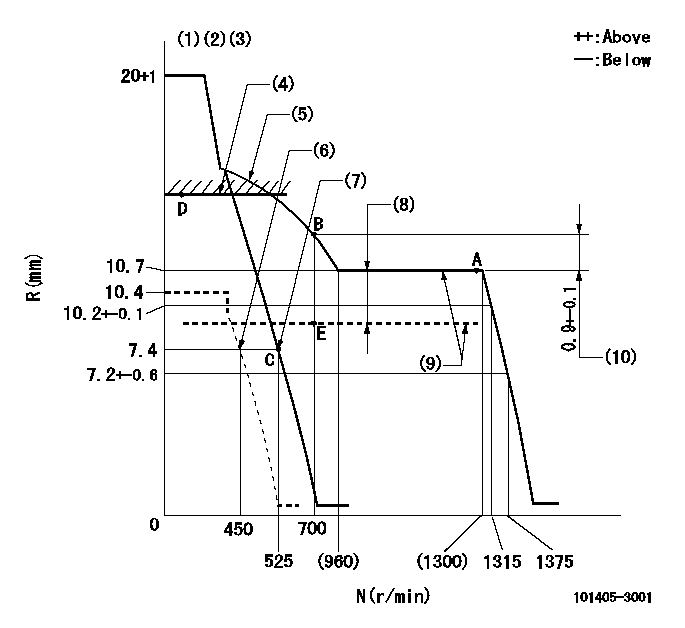
N:Pump speed
R:Rack position (mm)
(1)Target notch: K
(2)Tolerance for racks not indicated: +-0.05mm.
(3)Adjust the secondary timing before adjusting the governor.
(4)RACK LIMIT (When hydraulic cylinder is OFF)
(5)The torque control spring must does not have a set force.
(6)Set idle sub-spring
(7)Main spring setting
(8)Boost compensator stroke: BCL
(9)When hydraulic cylinder ON: P1
(10)Rack difference between N = N1 and N = N2
----------
K=11 BCL=1.1+-0.1mm P1=((392)kPa,{(4)kgf/cm2}) N1=1250r/min N2=700r/min
----------
----------
K=11 BCL=1.1+-0.1mm P1=((392)kPa,{(4)kgf/cm2}) N1=1250r/min N2=700r/min
----------
Speed control lever angle
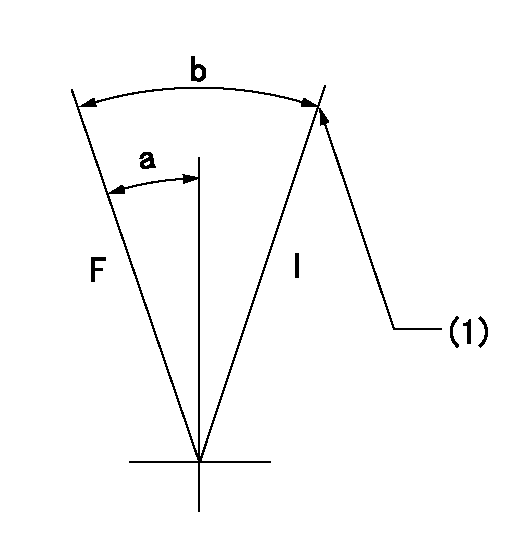
F:Full speed
I:Idle
(1)Stopper bolt setting
----------
----------
a=21deg+-5deg b=36deg+-5deg
----------
----------
a=21deg+-5deg b=36deg+-5deg
Stop lever angle
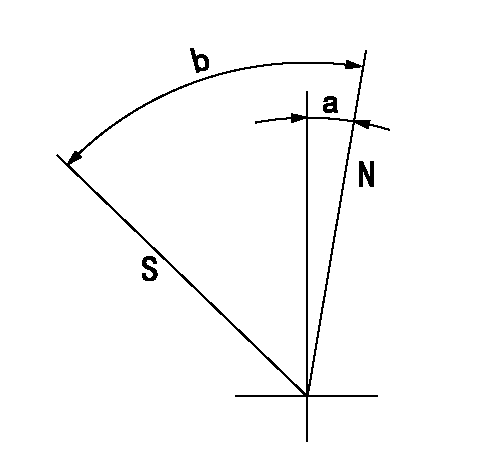
N:Pump normal
S:Stop the pump.
----------
----------
a=0deg+-5deg b=53deg+-5deg
----------
----------
a=0deg+-5deg b=53deg+-5deg
Timing setting
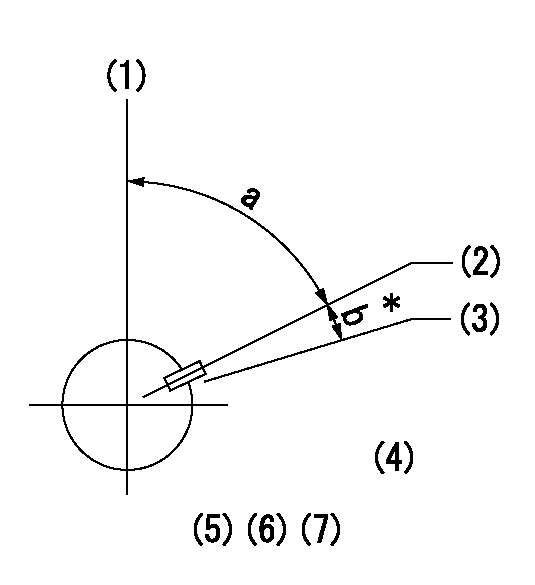
(1)Pump vertical direction
(2)Key groove position at No. 1 cylinder's beginning of injection position (at BTDC: aa).
(3)Position of the key groove of the No. 1 cylinder at B.T.D.C. bb (fix the governor flyweight at this position for delivery).
(4)B.T.D.C.: aa
(5)At second timing adjustment, set the camshaft at the * position and tighten the flyweight locknut.
(6)Align the flyweight's timing gear position with the lockpin groove and then fully tighten the flyweight to the camshaft.
(7)Remove the lock pin and adjust the governor. Reinstall the lock pin to fix the flyweight for delivery.
----------
aa=16.5deg bb=0deg
----------
a=54deg54min+-3deg b=8deg15min+-30min
----------
aa=16.5deg bb=0deg
----------
a=54deg54min+-3deg b=8deg15min+-30min
Information:
New Dipsticks With Full Range Readings
The 3176 uses a dipstick that has a FULL RANGE zone versus other dipsticks that have the traditional FULL mark. This dipstick is used to account for variations in engine installations. Engine oil level will vary depending on angle and slant of OEM engine installation (angle = front to back tilt, slant = sideways tilt).To determine the correct "FULL" mark in the FULL RANGE zone and prevent overfilling or underfilling the crankcase, it is important to calibrate the dipstick. The following procedure can be used:Calibration
Use the following procedure to calibrate "FULL RANGE" dipsticks. The dipstick should be calibrated when the truck is delivered to the customer. However, a convenient time to calibrate the dipstick is at the first oil change.Refer to the PM Level 1 of the "Maintenance Management Schedule" of this publication for the proper oil change interval.To verify the "ADD" mark and establish the actual "FULL" mark in the FULL RANGE zone, use the following procedure: Truck must be parked on a level surface.1. Operate the engine until it reaches normal operating temperature.2. Stop the engine. Drain the oil and change the oil filter.3. Fill the crankcase with 22 U.S. qts (21 L) of oil. DO NOT start the engine.4. Allow the oil to drain back to the sump for a minimum of 10 minutes.5. Remove the dipstick. The oil level should be at the "ADD" mark. If it is not, mark the actual level on the dipstick. This is now the correct "ADD" mark.6. Add an additional 3.5 U.S. qts (3.3 L) of oil to the sump. Allow enough time for the oil to drain into the sump. Again, check the level on the dipstick and DO NOT start the engine.7. This is the correct "FULL" mark on the FULL RANGE dipstick. Mark the new "FULL" mark level on the dipstick. Remote mounted or auxiliary filters require additional oil. Add the amount of oil required to fill the additional system capacity if it is known.Refer to Refill Capacity chart in this publication for information. If the additional capacity is not known, proceed with step number 8.8. Start the engine and operate until it reaches normal operating temperature. Stop the engine.9. Remove the dipstick. Add enough oil to bring the oil level to the "FULL" mark in the FULL RANGE zone. This is the additional amount needed to fill the oil filter(s) and bypass filter, if equipped.The oil level should be at the new calibrated "FULL" mark. If it is not, add oil until the oil level reaches the "FULL" mark.Any "FULL RANGE" dipstick for the 3176 Truck engine can be calibrated using this procedure.
The 3176 uses a dipstick that has a FULL RANGE zone versus other dipsticks that have the traditional FULL mark. This dipstick is used to account for variations in engine installations. Engine oil level will vary depending on angle and slant of OEM engine installation (angle = front to back tilt, slant = sideways tilt).To determine the correct "FULL" mark in the FULL RANGE zone and prevent overfilling or underfilling the crankcase, it is important to calibrate the dipstick. The following procedure can be used:Calibration
Use the following procedure to calibrate "FULL RANGE" dipsticks. The dipstick should be calibrated when the truck is delivered to the customer. However, a convenient time to calibrate the dipstick is at the first oil change.Refer to the PM Level 1 of the "Maintenance Management Schedule" of this publication for the proper oil change interval.To verify the "ADD" mark and establish the actual "FULL" mark in the FULL RANGE zone, use the following procedure: Truck must be parked on a level surface.1. Operate the engine until it reaches normal operating temperature.2. Stop the engine. Drain the oil and change the oil filter.3. Fill the crankcase with 22 U.S. qts (21 L) of oil. DO NOT start the engine.4. Allow the oil to drain back to the sump for a minimum of 10 minutes.5. Remove the dipstick. The oil level should be at the "ADD" mark. If it is not, mark the actual level on the dipstick. This is now the correct "ADD" mark.6. Add an additional 3.5 U.S. qts (3.3 L) of oil to the sump. Allow enough time for the oil to drain into the sump. Again, check the level on the dipstick and DO NOT start the engine.7. This is the correct "FULL" mark on the FULL RANGE dipstick. Mark the new "FULL" mark level on the dipstick. Remote mounted or auxiliary filters require additional oil. Add the amount of oil required to fill the additional system capacity if it is known.Refer to Refill Capacity chart in this publication for information. If the additional capacity is not known, proceed with step number 8.8. Start the engine and operate until it reaches normal operating temperature. Stop the engine.9. Remove the dipstick. Add enough oil to bring the oil level to the "FULL" mark in the FULL RANGE zone. This is the additional amount needed to fill the oil filter(s) and bypass filter, if equipped.The oil level should be at the new calibrated "FULL" mark. If it is not, add oil until the oil level reaches the "FULL" mark.Any "FULL RANGE" dipstick for the 3176 Truck engine can be calibrated using this procedure.
